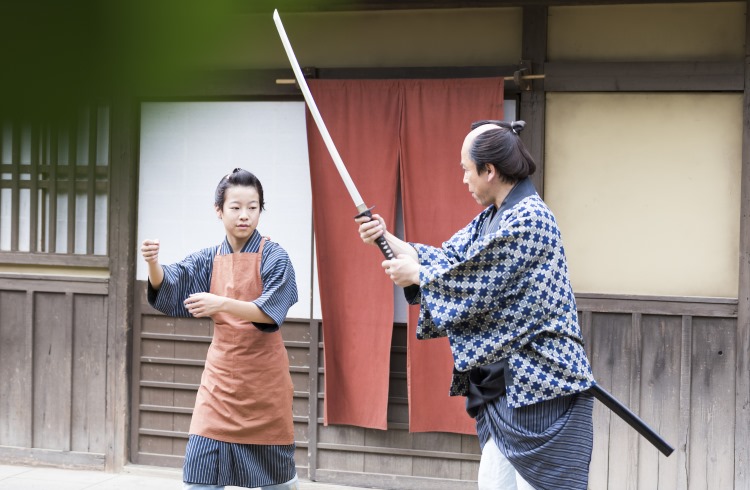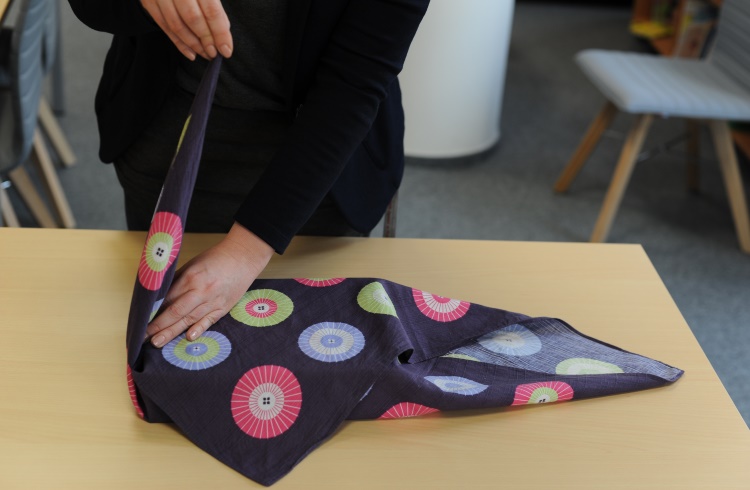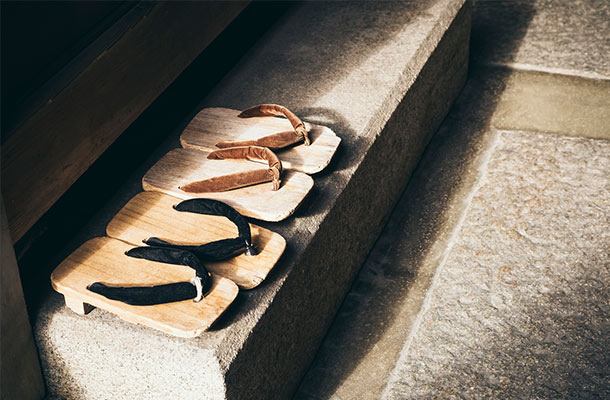5 Unique Cultural Experiences in Japan
Japan has become renowned for “weird” or quirky tourist attractions, from robot restaurants to snake cafes. But while kitschy activities can be fun, Japan also offers a range of more authentic, yet equally engaging things to do. Here are five that tap into true Japanese culture.
 Photo © Getty Images / Promo_Link
Photo © Getty Images / Promo_Link
- Ikebana: learning to arrange nature
- A Manga drawing class
- Understanding Bushido, the samurai warrior code that guides Japan
- Costumed street-kart cruising
- The art of Furoshiki: folding beauty
Ikebana: learning to arrange nature
It sounds unlikely, but the ever-so-gentle art of Japanese flower arranging was popularized by samurai. When they weren’t fighting on behalf of their feudal lord masters, these warriors favored more cerebral pursuits, such as pioneering Japan’s now-iconic tea ceremonies, and Ikebana.
This revelation is delivered to me by Ikebana artist Kimiko Yamamoto, during a flower arranging class in her Kyoto home. She tells me that, to counterbalance the adrenaline and chaos of war, samurai were attracted to meditative activities. The precise and silent art of Ikebana helped them relax.
Like samurai, Ikebana artists seek perfection, she told me. That comment rang true as I watch her painstakingly position a flower in a vase, sizing it up from multiple angles and making minute alterations before finally she is satisfied.
She explains that Ikebana aims to mimic nature. Each arrangement is intended not just to be pretty, but to have the same sense of balance we see in the outdoors, where open fields can flank deep forests, and colorful blossoms sprout from dull foliage. Ikebana artists value empty space, Yamamoto tells me.
This is in contrast to European-style arranging which favors bold designs, with dense bunches of flowers. “Keep it simple,” she says. Visitors can do the same at Ikebana classes, which can be found in most major Japanese cities.
A Manga drawing class
I’m not embarrassed by many things about myself, but I’ve always cringed at my inability to draw. For me, even sketching a basketball is difficult, yet here I am in a Tokyo art studio attempting to recreate a female character from Manga, the famous style of Japanese comic books. Fortunately, I have the expert guidance of seasoned Manga artist Nao Yazawa.
She runs Manga School Nakano International in Tokyo, one of many businesses across Japan that offer classes in Manga art to visitors. This style of comic book exploded in popularity in the 1950s and now is one of Japan’s most recognizable cultural products, collected by fans across the world.
After showing me some of her work, which feature exquisite detail, Yazawa challenges me to replicate one of her characters. “Impossible,” is my reply. So, she provides me with some artistic training wheels. Yazawa gets me to draw a grid on a piece of paper. This, she explains, will guide me in maintaining a sense of scale, as I begin drawing first the character’s head, then its face, body and limbs.
She is correct, to an extent. The body parts are reasonably well proportioned. They are just warped in shape, to the point it looks as if my creation is melting. Nevertheless, I leave this class with at least one trick to slightly improve my drawings.
Understanding Bushido, the samurai warrior code that guides Japan
Some travelers dress as samurai for photo opportunities while holidaying in Japan. But visitors who want to delve deeper into this unique element of Japanese culture can join a samurai workshop in major cities such as Kyoto, Osaka, and Tokyo.
It was during one such class in the Japanese capital that I encounter Bushido. This 800-year-old code of conduct was a cornerstone of the samurai culture and is still influential in Japanese society, encouraging respect, obedience, modesty, generosity, and self-discipline.
If you’ve ever wondered why many Japanese people are unerringly courteous, learning about Bushido will illuminate you. The young man who leads my samurai workshop, Yukihiro Oshida, spent years studying these Japanese warriors, who emerged in the 12th century and became not just respected soldiers but also political power players.
He explains that, while samurai were fearsome during combat, they maintained strong ethics in day-to-day life. This insight added greatly to my fun experience of learning how to move fluidly and wield a katana sword like a samurai.

Costumed street-kart cruising
Sometimes, you just have to get silly. Street karting certainly is not a deep cultural experience such as learning Ikebana or Bushido. Instead, it is raw joy, the kind of frivolity that can reconnect you with your childhood in a wonderful way. Dressing up as a Japanese cartoon character and then driving a go-kart through busy city traffic is also something you almost certainly can’t legally do back home. So, enjoy it while you can, during your holiday in Tokyo, Osaka, Kyoto, or Okinawa.
Those are the four locations where Street Kart has become an enormously popular activity in recent years. Wearing a zany costume, I climb into a small, 209lb (95kg) kart which is surprisingly fast, allowing me to keep pace with the cars around me until they pass 40mph (64kph). In a group of six karters, I cruise through downtown Tokyo, and eventually along an elevated road with views across Tokyo Bay. To follow suit, all you need is an international driver’s permit and a sense of fun.
The art of Furoshiki: folding beauty
Laying before me is a green, rectangular piece of fabric. I stare at it, waiting for inspiration. Perhaps sensing my creative juices are not yet flowing, my teacher Yuka gives a demonstration. We are sitting inside Sakura Japanese Culture Salon, at Tokyo’s Shiba Park Hotel, where Yuka instructs visitors in the 1,300-year-old Japanese artform of Furoshiki.
While the Japanese paper folding style of origami is world famous – and also taught here at Sakura – the somewhat similar Furoshiki is not well known internationally. Initially, it was invented as a means of decorating the valuables of Japan’s emperor with vases and ornaments wrapped in fine fabric, which was folded, woven, and tied in attractive fashion.

In the 14th century, Furoshiki expanded beyond Japan’s palaces and became used as an attractive way of carrying everyday items. “It’s much nicer than using a plain bag,” Yuka says. She explains that, in recent years, Furoshiki has enjoyed a resurgence as younger people learned how to fold fabric around bottles of wine, picnic supplies, or even their groceries.
After watching Yuka again and again – she is terribly patient – I replicate her moves and curl my fabric around a box of chocolates, creating a swirling pattern and a pretty bow on top. Yuka is right, this was certainly prettier and more interesting than a bag or wrapping paper. It was worth the effort.
Related articles
Simple and flexible travel insurance
You can buy at home or while traveling, and claim online from anywhere in the world. With 150+ adventure activities covered and 24/7 emergency assistance.
Get a quote


No Comments